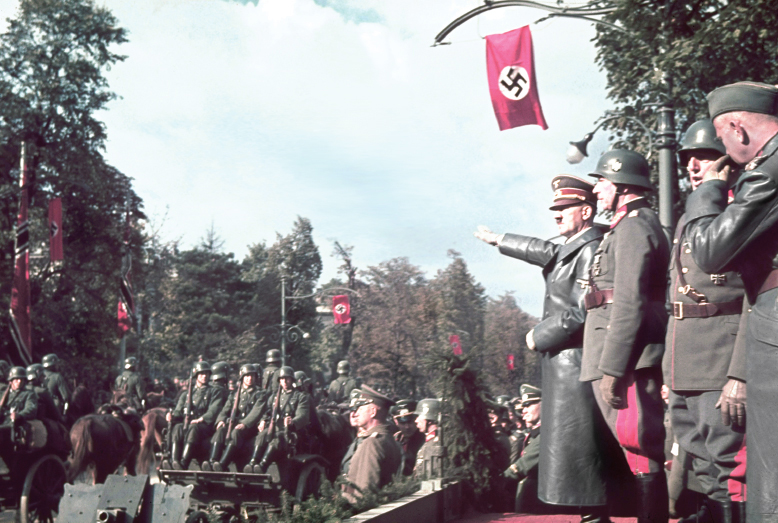How did the outbreak of war affect U.S. foreign policy?
Printed Page 748

Figure false: Nazi Invasion of Poland
Figure false: Adolf Hitler relished the early success of the German army’s blitzkrieg against Poland in 1939. This photo shows Hitler reviewing a victory parade of his soldiers in Warsaw. After the conquest, Germans systematically murdered hundreds of thousands of Polish civilians and confined even more to slave labor camps. Photo by Hugo Jaeger/Timepix/Time Life Pictures/Getty Images.
CHRONOLOGY
1938
- – Hitler annexes Austria.
1939
- – German troops occupy Czechoslovakia.
- – Nazi-Soviet nonaggression pact.
- – Germany’s attack on Poland begins World War II.
1940
- – Germany invades Denmark, Norway, France, Belgium, Luxembourg, and the Netherlands.
- – British and French troops evacuate from Dunkirk.
- – Battle of Britain.
- – Tripartite Pact.
1941
- – Lend-Lease Act.
- – Germany invades Soviet Union.
- – Japanese attack Pearl Harbor.
- – United States enters World War II.
BETWEEN 1939 AND 1941, fascist victories overseas eventually eroded American isolationism. At first, U.S. intervention was limited to providing material support to the enemies of Germany and Japan, principally Britain, China, and the Soviet Union. But Japan’s surprise attack on Pearl Harbor eliminated that restraint, and the nation began to mobilize for an all-out assault on foreign foes.